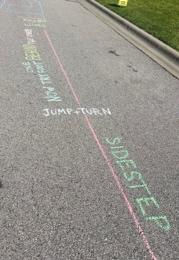Understanding Hypertonia and how PT can Help
- All Care Therapies

- Apr 20, 2023
- 2 min read

Hypertonia is a condition in which there is an increase in muscle tone that occurs in
arms or legs, including when at rest. This increased tone makes it difficult for movement in the limbs to occur, therefore greatly affecting a person’s mobility and activities of daily living. Since tone is regulated via several tracts in the brain and spinal cord, hypertonia is most prominent in individuals with a neurologic disorder such as Cerebral Palsy, Multiple Sclerosis, and Parkinson’s disease, or any other injuries to the brain or spinal cord (i.e. traumatic brain injury, stroke, etc).
Listed below are several types of hypertonia:
● Spasticity - A velocity-dependent resistance to movement, meaning that it greatly
interferes with voluntary movement. Individuals often display an exaggerated reflex
response.
● Dystonia - Involuntary muscle contractions that cause slow, repetitive movements.
● Rigidity - Increased stiffness through the full range of motion of a joint. The muscles
around the joint are in a constant state of stiffness and are unable to relax normally.
Rigidity is most prominent in Parkinson’s Disease.
Challenges of Hypertonia:
● Restricts fluid movement - can lead to immobility
● Decreased positional support - sitting upright, standing, etc.
● Decreased coordination
How can physical therapy help?
Due to the restricted movement, individuals with increased tone are typically less mobile
than the average person. Physical Therapy is a great way to increase general mobility in a safe environment, strength train, improve activities of daily living and self-care (task practice), as well as provide caregiver education. While hypertonia is not curable, physical therapists can help manage the degree of tone and prevent further severity such as the development of contractures. Additionally, research has shown that there are many effective ways to increase functional ability in individuals faced with hypertonia. These include:
● Passive stretching techniques
● Neuromuscular Electrical Stimulation (NMES)
● Hippotherapy/Horse Riding Simulators (HRS)
● Aquatic therapy
● Orthotics
References:
1. Hypertonia. Child Neurology Foundation. Accessed March 30, 2023.
https://www.childneurologyfoundation.org/disorder/hypertonia/
2. Ganguly J, Kulshreshtha D, Almotiri M, Jog M. Muscle Tone Physiology and
Abnormalities. Toxins. 2021; 13(4):282. https://doi.org/10.3390/toxins13040282
3. Hypertonia | National Institute of Neurological Disorders and Stroke. www.ninds.nih.gov.
https://www.ninds.nih.gov/health-information/disorders/hypertonia
4. Gavin Williams, Barby J. Singer, Stephen Ashford, Brian Hoare, Tandy Hastings-Ison,
Klemens Fheodoroff, Steffen Berwick, Edwina Sutherland & Bridget Hill (2022) A
synthesis and appraisal of clinical practice guidelines, consensus statements and
Cochrane systematic reviews for the management of focal spasticity in adults and
children, Disability and Rehabilitation, 44:4, 509-519, DOI:
10.1080/09638288.2020.1769207
Image: https://www.progressivecare.in/hypertonia-and-hypotonia-in-pediatrics/




Comments